Introduction
Kiwi, the nutrient-dense fruit from the Actinidia genus, is a favorite among gardeners and health enthusiasts alike. With their vibrant green interiors, smooth or fuzzy skins, and refreshing flavor, kiwis offer impressive health benefits and a rewarding gardening experience. Whether you're planting hardy kiwi (Actinidia arguta) or tender types like Actinidia deliciosa, understanding the unique care they require will set you up for success.
Thanks to cold-hardy varieties and modern kiwi trellis systems, growing hardy kiwi in USDA Zones 4–9 is now more accessible than ever. When done properly, kiwi cultivation can produce lush vines and abundant fruit, even in backyard gardens.
Learn more about growing kiwis successfully and watch Tricia’s in-depth video guide on kiwi care.

Why Grow Kiwi in Your Garden?
Kiwis aren’t just a sweet snack—they’re a smart addition to any garden. Here’s why:
- Nutritional Powerhouse: Kiwi fruits are packed with vitamin C—more than oranges—along with vitamin K, fiber, and powerful antioxidants that support digestion, immune function, and heart health.
- Stunning Garden Presence: With their vigorous climbing habit, kiwi vines add height, shade, and lush green texture to trellises, fences, and pergolas, enhancing both function and beauty in your landscape.
- High-Yielding Potential: Once established, a single mature vine can produce up to 100 lbs of fruit each season, making them a valuable producer in edible gardens.
- Cold Hardy Options for Many Climates: If you're gardening in cooler zones, cold-hardy kiwis like Issai are ideal—they tolerate winter temperatures and don’t require a separate pollinator.
- Sustainable & Cost-Effective: Growing your own kiwis means fewer trips to the store, less plastic packaging, and fresher fruit with a lower carbon footprint.
Explore our curated selection of kiwi varieties perfect for home gardens.

Choosing the Right Kiwi Variety
Tender vs. Hardy Kiwi
- Tender Kiwi (e.g., Vincent): These are the traditional large, fuzzy kiwis found in grocery stores. They thrive in USDA Zones 8–9 and require both male and female vines for fruiting. Pair a female Vincent vine with a male Tomuri for best results.
- Hardy Kiwi (e.g., Issai): These smaller, smooth-skinned fruits are grape-sized and can be eaten whole. Hardy kiwi vines are cold tolerant (Zones 4–9) and the Issai variety is self-pollinating, making it easier for beginner gardeners to succeed.
Planting Kiwi: Getting Started
Kiwi Grow Zone & Site Selection
Kiwis thrive in USDA Zones 4–9 depending on the variety. Choose a sunny, wind-sheltered site with fertile, well-drained soil. Avoid frost-prone areas, as new shoots are sensitive to late spring frosts.
Kiwi Propagation
Kiwi plants are often propagated from cuttings to ensure strong, disease-free vines with predictable characteristics. For a reliable technique, check out our step-by-step propagation guide.
Planting Tips
- Clear all perennial weeds and amend the soil with compost or well-rotted manure
- Space vines 10–15 feet apart to allow for full growth
- Ensure soil drains well to prevent root rot diseases like phytophthora
- Install a trellis system before planting to avoid disturbing roots later on
Read our complete Kiwi Planting Guide for soil prep, spacing, and care.
Supporting Kiwi Vines: Trellis Systems
Why Kiwi Vines Need a Trellis
Kiwi vines are extremely vigorous growers and can reach over 20 feet in a single season. A strong support system is essential to handle the weight of foliage and fruit—especially since mature vines can yield up to 100 lbs of fruit. Trellising improves air circulation, reduces disease risk, and makes pruning and harvesting much easier.
Kiwi Trellis Ideas
You can adapt your trellis style based on space, aesthetics, and function:

T-Bar Trellis (Most Common)
- A central post with a horizontal crossbar (like a T) at the top.
- Horizontal wires extend in both directions, allowing vines to grow outward symmetrically.
- Best for larger spaces or rows of vines.
- Offers excellent air circulation and light penetration—important for disease prevention and fruit quality.

Espalier Style (Kiwi Espalier)
- Ideal for walls, fences, or narrow garden spaces.
- Vines are trained horizontally along evenly spaced wires.
- Combines functionality with ornamental appeal—a great option for urban or decorative gardens.
- Requires consistent pruning to maintain shape and productivity.

Arbor/Pergola Systems
- Perfect for edible landscaping and shaded outdoor areas.
- Vines grow overhead, creating a living canopy that’s both beautiful and productive.
- Requires sturdy construction, as overhead vines can become quite heavy.
- Offers the unique experience of picking kiwi from above!
By following Oregon State’s best practices and matching the trellis design to your garden’s needs, you’ll set the foundation for strong, productive kiwi vines for years to come. Discover the best options for your backyard kiwi trellis.
Designing a Kiwi Trellis System
Designing a successful trellis system for your kiwi vine is essential to support vigorous growth, promote fruit production, and maintain long-term vine health. Kiwi vines are heavy and fast-growing—often producing 50 to 100 pounds of fruit per season—so a strong, well-planned support structure is critical.
Oregon State University’s guide offers detailed trellis schematics and vine training techniques tailored to both commercial and home garden growers. Their recommendations are based on research into vine structure, airflow needs, and fruiting cane productivity.
When designing your trellis, consider these core principles:
- Strength and Durability: Use treated wood or metal posts at least 4" in diameter. The system must withstand heavy yields, wind, and seasonal pruning.
- Height and Access: Aim for a height of 6–7 feet, which allows for easy pruning and harvest while maximizing sunlight and air circulation.
- Wire Spacing: Use multiple levels of high-tensile wire spaced approximately 18–24 inches apart vertically. The lowest wire should be about 4 feet above the ground to keep fruit off the soil and improve ventilation.
- End Anchors: Secure your trellis with strong anchors at the ends to prevent sagging under the weight of mature vines.
- Orientation: For rows, align your trellis north to south if possible to maximize sunlight exposure on both sides.

Pruning Kiwi: Maintaining Vigor & Yield
Importance of Pruning Kiwi
Pruning is essential to managing kiwi vines and ensuring they remain healthy, productive, and manageable over time. Left unchecked, kiwi vines grow rapidly—often producing dense tangles of growth that block sunlight, limit airflow, and reduce fruit quality.
Key benefits of regular pruning include:
- Directing energy into fruiting rather than excessive vegetative growth
- Improving sunlight penetration and air circulation, which reduces the risk of fungal diseases
- Encouraging stronger fruiting canes and higher yields
- Simplifying harvesting and general maintenance
- Extending the productive life of the vine
A well-pruned kiwi vine will be more compact, balanced, and consistently fruitful year after year.
Pruning Kiwi Vines: Seasonal Guide
Year 1 (Establishing the Trunk)
- Train one strong central shoot vertically up to the first support wire.
- Remove all side shoots and suckers below the wire to develop a clean, single trunk.
- Tie the main shoot loosely to a stake or trellis to encourage upright growth.
Year 2 (Forming the Framework)
- Select two vigorous lateral shoots near the top wire to become permanent cordons.
- Train one shoot to grow horizontally in each direction along the support wire.
- Remove competing shoots and continue training the central trunk if needed.
Year 3 (Initiating Fruiting Canes)
- Allow fruiting laterals to grow upward or outward from the cordons.
- Space these fruiting arms approximately 6–12 inches apart for balanced production.
- Begin shaping the vine into a structured framework that encourages annual renewal.
Year 4 and Beyond (Maintaining Production)
- Perform dormant pruning in late winter to remove old, weak, or overcrowded canes.
- Leave only strong 1-year-old wood (at least ¼ inch thick) for the upcoming fruiting season.
- Thin crowded areas to promote airflow and light penetration.
- In summer, perform light pruning to control vigorous regrowth and remove suckers or water sprouts.
For advanced diagrams and specific pruning strategies—including tips for rejuvenating older vines—refer to Oregon State University’s Kiwi Guide.
Conclusion
Growing hardy kiwi in your backyard is both rewarding and feasible with the right approach. From choosing the proper variety to implementing a strong trellis for kiwi vine, every step plays a role in the plant’s long-term success.
Mastering pruning techniques and following expert resources like Oregon State University and Grow Organic’s Kiwi Growing Guide will ensure healthy vines, beautiful growth, and delicious harvests for years to come. Ready to get started? Explore our selection of kiwi vines for sale.
FAQs: Kiwi Planting, Trellising & Pruning
-
How to properly cut up kiwi?
- Cut off both ends, then use a spoon to scoop out the flesh or peel the skin using a vegetable peeler.
-
How do you know when a kiwi is ready to be cut?
- A ripe kiwi will yield slightly to gentle pressure and have a fragrant aroma. For the best taste, let it soften slightly at room temperature.
-
How many years does it take for a kiwi plant to produce fruit?
- Most kiwi plants start bearing fruit in 3 to 5 years, depending on variety and care.
-
What is the best way to plant a kiwi?
- Choose a sunny, sheltered location with well-drained soil. Install your kiwi trellis system first, then plant your vines, spacing them appropriately.
-
Where do kiwis grow best?
- Hardy kiwi grow best in USDA Zones 4–9, while tender varieties thrive in Zones 8–9. They prefer full sun and protection from harsh wind.
-
What is the best trellis for kiwi fruit?
- A T-bar trellis is the most effective for supporting heavy fruit loads and vigorous vines. Learn more about kiwi trellis design.
-
How tall should a kiwi trellis be?
- Ideal trellis height is 6–7 feet, tall enough to support cordon growth and ease of maintenance.
-
How to support a kiwi tree?
- Use a kiwi trellis system like a T-bar or espalier. Secure vines with garden ties and regularly prune to manage shape and vigor.

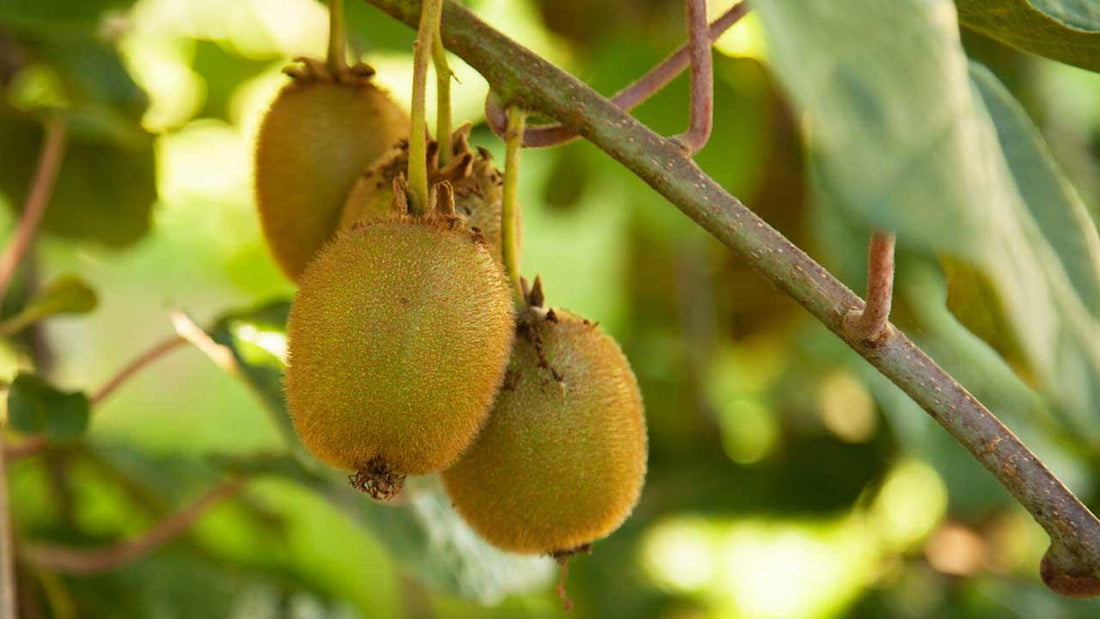
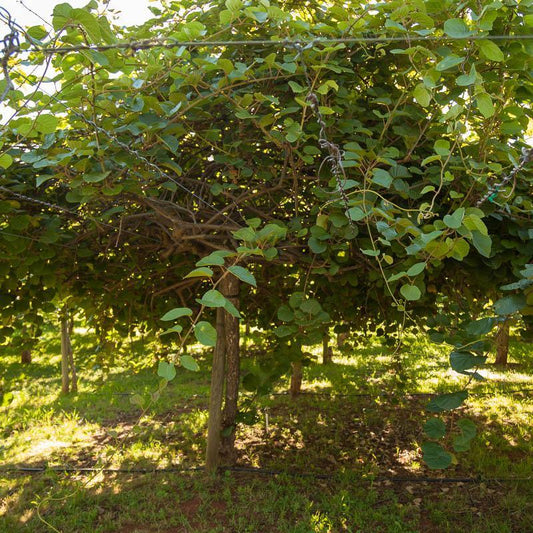
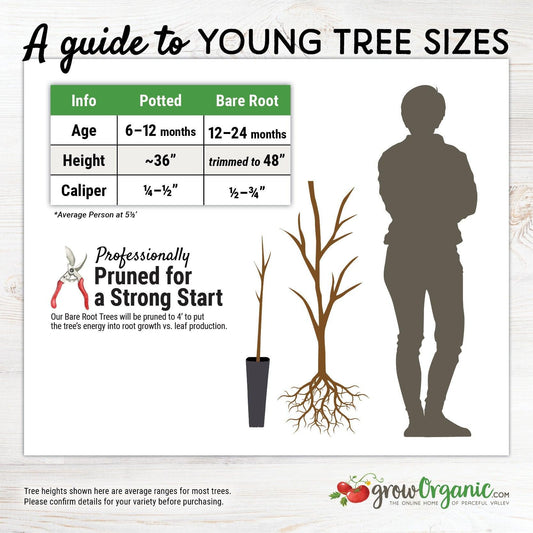
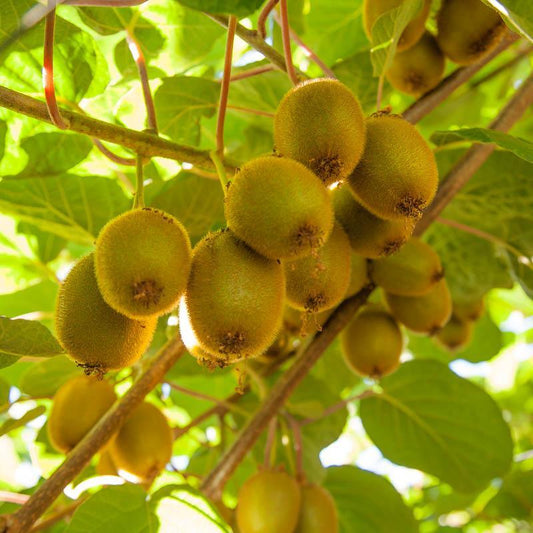
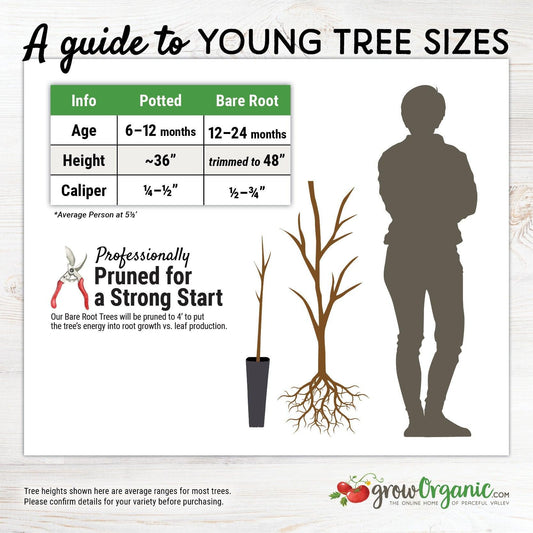
7 comments
I have a PVC fence and two vines ready to start! I plan on starting the cordons at 2’, 4’ and then the top of the fence at 6’. Can I use PVC 1" for my vertical support, since I cannot tie it onto the fence? Should I use PVC 1" for the horizontal support or stick to stainless steel wire? TIA!
Hi,
I would like to try to espalier a kiwi vine along my chain link fence. I’m hoping you can answer some questions for me.
How close to the ground can I start the first 2 cordons? Is there a minimum height necessary?
How much vertical space must be left between layers of cordons? How many layers of cordons can I stack? Two? Three? More?
How long horizontally can each cordon grow and still remain healthy and fruitful?
Much appreciated!
Beyla